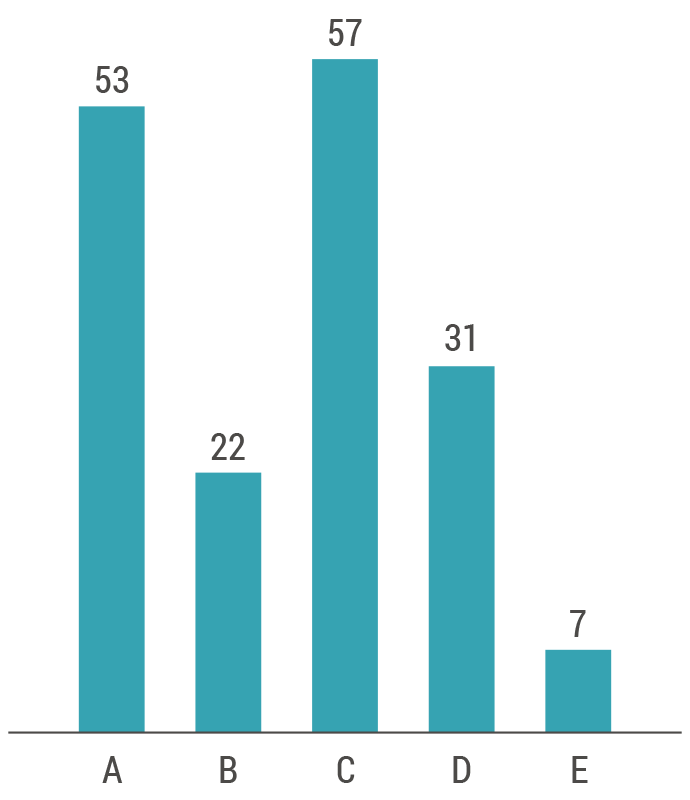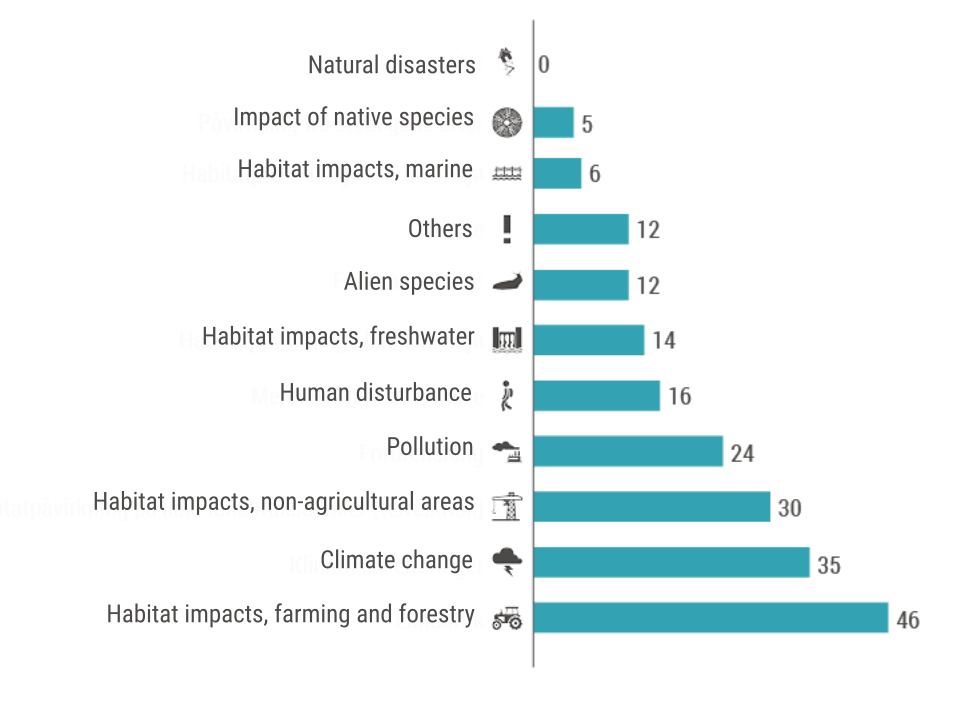Reasons for red-listing
Each ecosystem type is assessed with quantitative criteria developed by the International Union for Conservation of Nature (IUCN). An ecosystem type is assessed against several criteria, although it is the criterion for which the highest category of risk is assigned which determines the Red List category. The criterion says something about the reason for the ecosystem type being red-listed.
Each ecosystem type is tested against five criteria, A – E. The criterion (or criteria) that assigns the highest risk for the collapse of the ecosystem type determines the Red List category.
Assessment criteria
Environmental degradation, caused by abiotic factors (criterion C), is the most common reason for ecosystem types being red-listed (Figure 1). This means that more than 20 % of the total area of the ecosystem type has become degraded due to abiotic factors such as agriculture, forestry, road construction, or trawling.
Many ecosystem types are red-listed because more than 20 % of the total area has disappeared (criterion A). Examples include Intertidal blue mussel beds and Semi-natural grassland.
Degradation, determined by biotic factors (criterion D) has been the criterion with the highest risk level for 31 ecosystem types. This means that more than 20 % of the total area of the ecosystem type has been negatively influenced by biotic factors such as overgrowth of pasture and hay fields, or alien species.
Ecosystem types that are red-listed on the basis of criterion B have a limited geographical distribution or occurrence, and the area or quality has been reduced. For example, both shallow and deep humic (dystrophic) lakes are threatened because they cover a very small area.
The most important impact factors
Land change, pollution, climate change, overexploitation, and alien species represent the five largest threats to biodiversity on a global basis. In Norway, the factors that impact the greatest number of ecosystem types, to such a degree that they may eventually collapse are: farming and forestry, climate change, habitat impacts on non-agricultural areas, and pollution (Figure 2).
Farming and forestry, in this context, encompasses agriculture, forestry (including afforestation), keeping cattle, and the process whereby abandoned farmland, especially pasture areas, becomes overgrown. Habitat impacts on terrestrial non-agricultural land encompasses development/mining, abandoned farmland, or other impacts on habitat. Pollution can be terrestrial, aquatic or atmospheric.

